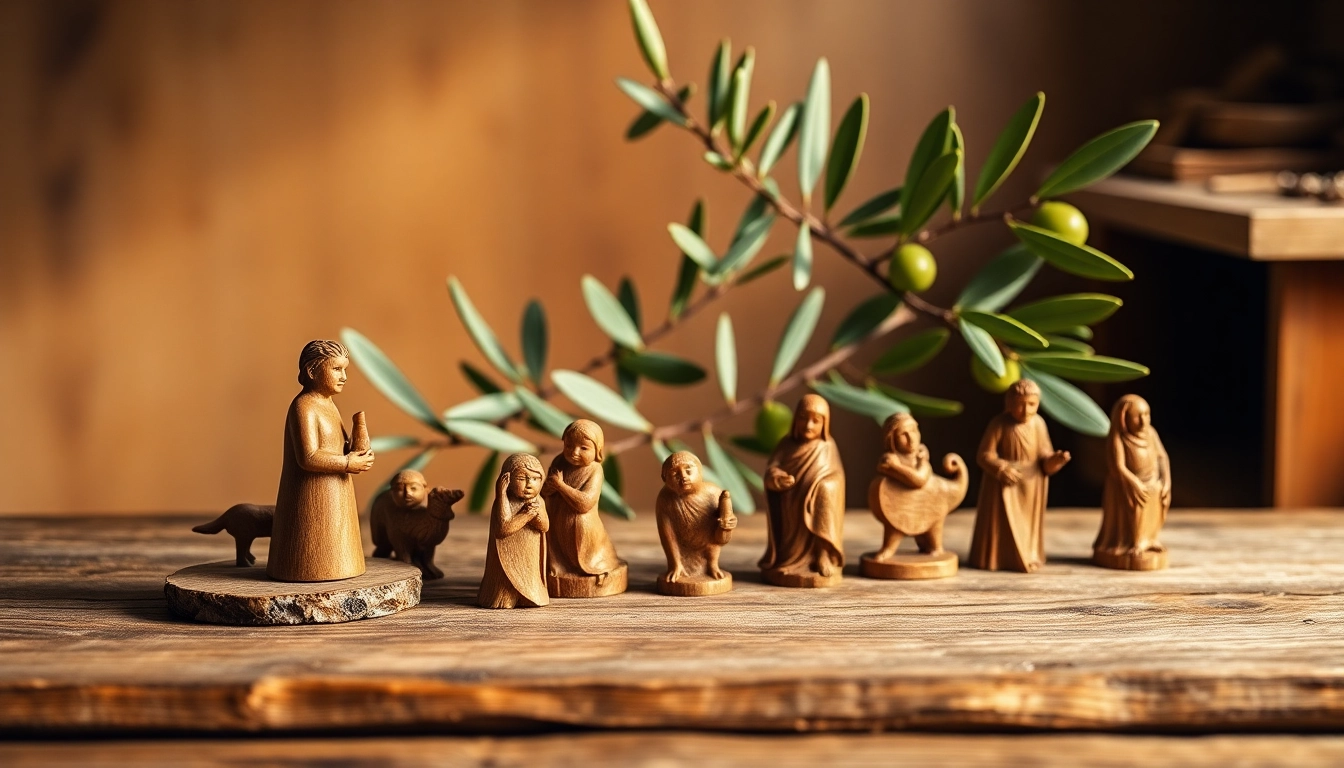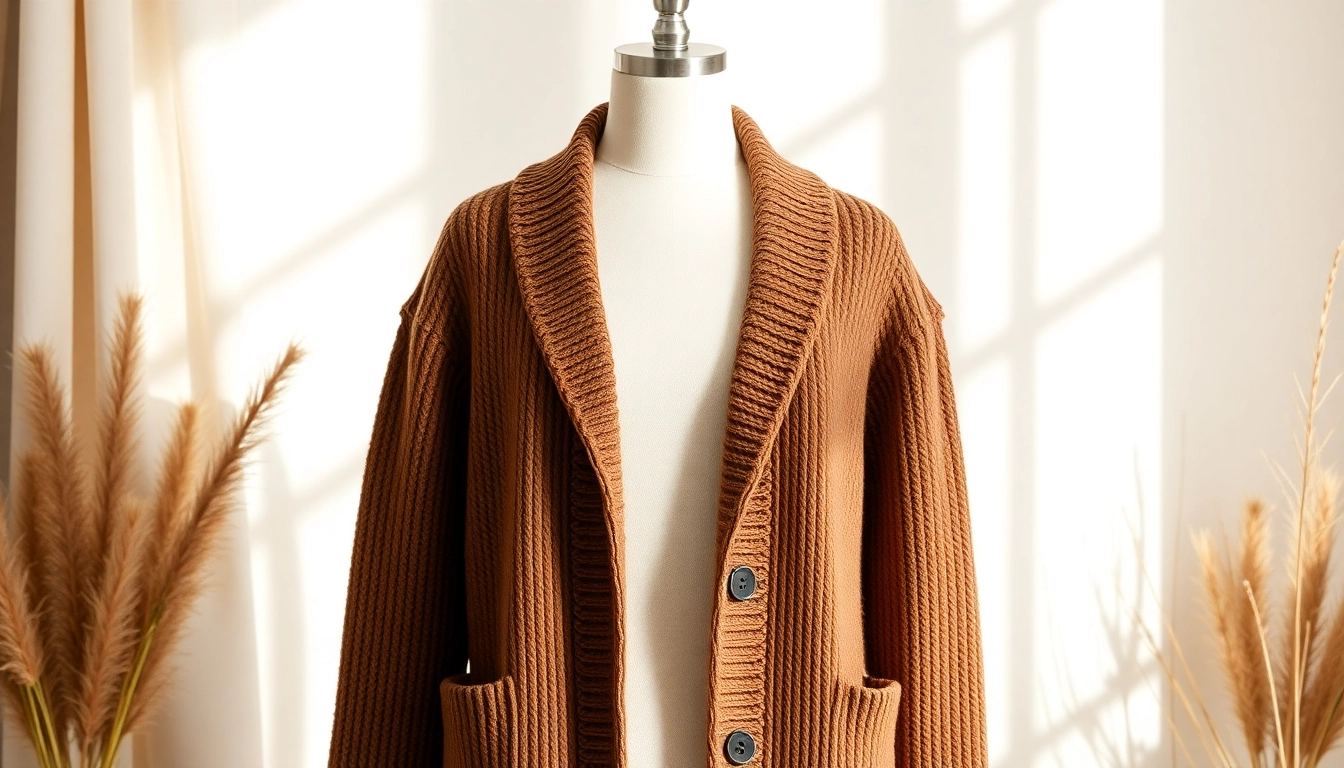Understanding Olive Wood Carvings
What are Olive Wood Carvings?
Olive wood carvings are intricate artworks created from the wood of the olive tree, a tree traditionally significant in Mediterranean culture and known for its durability and attractive grain. Carved items can range from religious figures to decorative collectibles, often embodying both artistic craftsmanship and cultural heritage. The beauty of olive wood carvings lies not only in their aesthetic appeal but also in the centuries-old techniques and traditions that artisans use to transform raw wood into detailed art pieces. For those interested in exploring a diverse range of olive wood carvings, the options are abundant and varied.
The History Behind Olive Wood Carvings
The art of olive wood carving has deep historical roots, tracing back thousands of years. The olive tree itself is one of the oldest cultivated trees in the world. Its wood has been revered since ancient times, particularly in the regions surrounding the Mediterranean Sea, including Palestine, Italy, and Greece. In Bethlehem and Jerusalem, skilled artisans hand-carve intricate religious scenes and figures that reflect deep spiritual significance.
Artifacts and remnants from ancient civilizations show that olive wood was used for practical purposes as well as spiritual offerings. Over time, these practical uses evolved into an art form, with artisans developing unique styles and techniques. Today, olive wood carvings are not just objects but are symbols of heritage, storytelling, and faith.
The Cultural Significance of Olive Wood in Art
Olive wood carries profound cultural significance in many societies, particularly among religious communities. In Christianity, for instance, olive wood is often used to create religious artifacts, including crosses, nativity scenes, and figures of saints, which serve as reminders of faith and devotion. Additionally, the olive tree’s history as a symbol of peace and prosperity further enriches its value in artistic endeavors.
In many regions, purchasing olive wood products supports local artisans and preserves cultural traditions. This connection to the community and heritage is central to the narrative surrounding olive wood carvings, enhancing their importance beyond mere aesthetics.
Techniques Used in Olive Wood Carvings
Hand-Carving Techniques Explained
Hand-carving is at the heart of olive wood artistry. Artisans typically use a combination of chisels, knives, and gouges to shape the wood. The process usually begins with selecting the right piece of wood, looking for specific grain patterns and colors that enhance the final product. Once the wood is selected, artisans sketch their designs, carefully considering both the form and the functional aspects of the piece.
Next, rough cuts are made to shape the piece, followed by detailed carving to bring intricate designs to life. This stage often requires incredible skill and patience, as artisans must navigate the wood’s natural grain to avoid splitting or damaging the material. Finally, the piece undergoes polishing, wherein fine sandpaper is used to achieve a smooth finish, revealing the rich tones of the olive wood beneath.
Tools Needed for Olive Wood Carving
To create stunning olive wood carvings, artisans rely on a variety of specialized tools. Essential tools include:
- Chisels: These are crucial for shaping and defining the carved pieces.
- Gouges: Used for hollowing out sections of wood and creating depth.
- Knives: A versatile tool for both cutting and detailing work.
- Rasps and files: Employed in the finishing stage to smooth out rough edges and define intricate details.
- Sandpaper: Necessary for the final polishing stages to bring out the natural beauty of the olive wood.
These tools, combined with the artisan’s skill and experience, create the unique and beloved olive wood carvings found in markets and shops around the world.
Finishing and Polishing Olive Wood Creations
The finishing touch is critical to enhancing the beauty of olive wood carvings. After the initial carving, pieces are sanded down to eliminate any rough patches, ensuring they feel smooth to the touch. Craftsmen often use a range of sandpaper, starting with coarse grains and progressing to finer grades.
Once satisfied with the smoothness, artisans typically apply a natural finish, such as olive oil or beeswax, to protect the wood and enhance its rich color and grain. This not only beautifies the piece but also helps to preserve it for years, allowing the carvings to age gracefully.
Choosing the Right Olive Wood Carvings
Factors to Consider When Purchasing
When it comes to purchasing olive wood carvings, several factors should be considered to ensure quality and authenticity:
- Material Quality: Authentic olive wood should have a rich, coarse grain and a distinct smell. It’s essential to differentiate between genuine olive wood and composite or lower-quality woods.
- Craftsmanship: Look for attention to detail and a well-finished surface. Quality carvings should feel smooth and showcase skillful craftsmanship.
- Design: Consider the design that resonates most with you—whether religious, decorative, or functional—as this will enhance your connection to the piece.
- Source of Purchase: Buy from reputable sellers to ensure that you’re supporting ethical practices and ensuring the authenticity of your item.
Where to Find Quality Olive Wood Carvings
Quality olive wood carvings can be found in various outlets, ranging from local artisan markets to online stores. Some of the best sources include:
- Local Artisans: Visiting local markets in regions like Bethlehem or Jerusalem provides opportunities to meet the creators and purchase directly.
- Art Galleries and Museums: Many galleries exhibit and sell authentic olive wood carvings, often providing insights about the artists.
- Online Retailers: Websites dedicated to promoting traditional crafts often provide a selection of olive wood carvings, sometimes with detailed information on the artisans involved.
How to Verify Authenticity in Olive Wood Carving Products
To verify the authenticity of olive wood carvings, consider the following guidelines:
- Request Certification: Authentic sellers often provide certificates indicating that the item is made from genuine olive wood.
- Inspect the Grain: Genuine olive wood has a unique, colorful grain that varies from piece to piece. Familiarizing yourself with these characteristics can help in identifying authenticity.
- Ask About the Artisan: Knowledgeable sellers should be able to provide background information on the artisans who created the piece.
- Research the Seller: Look for reviews and feedback from previous customers to ensure the seller’s reputation for authenticity.
Care and Maintenance of Olive Wood Carvings
Best Practices for Cleaning and Caring for Your Carvings
Proper care of olive wood carvings extends their lifespan and maintains their beauty. Here are key practices to follow:
- Avoid Water: Olive wood is sensitive to moisture, which can lead to warping and cracking. Clean surfaces with a dry or slightly damp cloth instead of soaking them.
- Use Natural Oils: Periodically applying a small amount of olive oil can help rejuvenate the wood and protect it from drying out.
- Store Carefully: If you need to store carvings, keep them in a cool, dry place to prevent temperature fluctuations that might damage the wood.
Storing and Displaying Olive Wood Art Effectively
How you store and display your olive wood carvings can significantly affect their condition:
- Display Away from Direct Sunlight: To prevent fading and warping, place carvings out of direct sunlight.
- Use Sturdy Shelving: Ensure that shelves used for displaying carvings are sturdy enough to support their weight securely.
- Consider Humidity Levels: If you live in an area with high humidity, consider using a dehumidifier to maintain a consistent environment for your carvings.
Common Mistakes to Avoid with Olive Wood Care
When caring for olive wood carvings, many people inadvertently make mistakes. Common pitfalls include:
- Cleaning with Harsh Chemicals: Using strong detergents can strip the natural oils from the wood, leading to dullness and damage.
- Assuming All Finishes Are the Same: Different carvings may require varying types of finishes or maintenance; always follow specific care recommendations for each piece.
- Neglecting Regular Maintenance: Failing to apply oil or clean regularly can lead to a decline in the quality and appearance of the carvings.
The Future of Olive Wood Carvings
Emerging Trends in Olive Wood Art
The future of olive wood carvings appears bright and full of artistic innovation. As environmental awareness rises, many artisans focus on sustainable harvesting methods, ensuring that the olive trees they use continue to thrive. Moreover, there’s an increasing trend toward blending traditional techniques with contemporary designs, allowing for a new wave of artwork that resonates with younger audiences while preserving the integrity of the craft.
Emerging artists are also incorporating mixed media into their work, combining olive wood with other materials like metal or glass, which adds a modern twist to a time-honored tradition, making olive wood carvings more accessible and appealing to diverse collectors and consumers.
Supporting Local Artisans and Sustainable Practices
Supporting local artisans is crucial for the ongoing tradition of olive wood carving. By purchasing directly from these artisans, collectors can help sustain local economies and maintain cultural heritage. In addition to traditional items, many artisans offer workshops and classes, providing opportunities for individuals to learn the craft themselves while further promoting appreciation for the art.
Sustainable practices are essential in ensuring the longevity of both the craft and the resources used. Artisans are increasingly focused on responsible sourcing and production methods, which minimizes environmental impact while maintaining artistic integrity.
Community and Global Impact of Olive Wood Carvings
Olive wood carvings make a significant impact both locally and globally. On a community level, they preserve the cultural identity of the artisans, reflecting stories that have been passed down through generations. Globally, these carvings foster a connection among people who appreciate the artistry and cultural significance behind each piece.
Furthermore, as the demand for authentic handmade products grows, more consumers are recognizing the importance of purchasing ethically sourced items, leading to a positive shift toward support for artisans and sustainable practices in the global marketplace.



